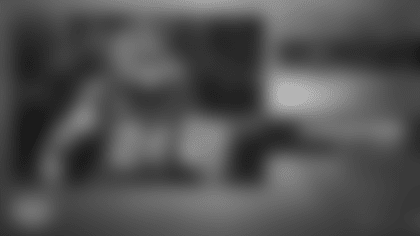The following analysis does not reflect the opinions of the Washington Commanders unless specified in a direct quote.
It's time to start preparing for next season! Click HERE to place your deposits for the 2023 campaign.
The Washington Commanders are inching closer to the NFL Draft, and I have some thoughts on the players who could be available to them with the No. 16 overall pick.
Over the next few weeks, I will be breaking down some prospect that have stood out to me in my analysis of the Commanders' positions of need. Next up is TCU guard Steve Avila.
Summary/Scheme fit
When I turned on the film it was obvious TCU's Steve Avila was born to play interior offensive line. Measuring in at 6-3 and weighing in at 334 pounds, he looks wider than he is tall. Despite his size, he plays with tremendous bend and shows a high-level ability to move defenders while still being under control.
While Avila's size caught my eye, size is not unique in this interior offensive line class especially at the top. O'Cyrus Torrence is the consensus No. 1 guard. He is a large, powerful man, who has been the model of consistency over the course of his carrier.
Despite his size and consistent play, I would go against the grain and place Avila as my No. 1 guard in this class.
Why?
Unlike Torrence, Avila has quick athletic feet that stay active. This allows him to effectively work to the second level, pull, change direction in pass protection and even have success with outside zone.
Foot speed and quickness may seem like a small thing for a position that has historically been defined by physicality and toughness. However, athleticism has become more important at the position. Avila isn't the most athletic guard in this class; his foot speed and bend would allow the team that selects him to live in two worlds.
Offenses generally fall into two buckets: those that run gap scheme runs coupled with drop back pass, and those that run outside zone married with play pass.
The gap scheme teams traditionally run more drop back passes because play action passes off gap scheme runs are less effective. As a result, gap scheme teams tend to look for larger guards that can move defenders vertically on double teams.
This is probably obvious; big men move small men, but large guards also have an advantage in pass protection, specifically for smaller quarterbacks. Big guards help keep the depth of the pocket, holding their defenders at or near the line of scrimmage. The increased pocket depth takes pressure off the offensive tackles and allows the quarterback the ability to step up.
In addition, big-bodied guards also help create throwing lanes for the quarterback. This was a huge part of New Orleans team building strategy. The front office consistently found big guards to help Drew Brees better see the middle of the field.
The problem with a gap scheme drop back philosophy is that it limits the effectiveness of the play action passing attack. Play action passes are an excellent way to find explosive plays, stymie the defensive pass rush and limit the stress on the quarter back. It is hard to find guards that are physically capable of executing both schemes at a high level.
While Avila is more of a gap scheme player, his quick feet would allow the team that drafted him to dabble in both worlds, unlike Torrence, who is more one dimensional. Couple this with Avila's experience at center, and the edge for top guard in this class clearly falls to Avila.
Player Comparison
A quicker Mike Iupati
Strengths
- Size
- Foot quickness
- Position flexibility
Weaknesses
- Lack of optimal length
- Not a top end athlete despite exceptional foot quickness
- Eye discipline on stunts and blitzes















